5 Types of Fishing Reels to Catch More Fish
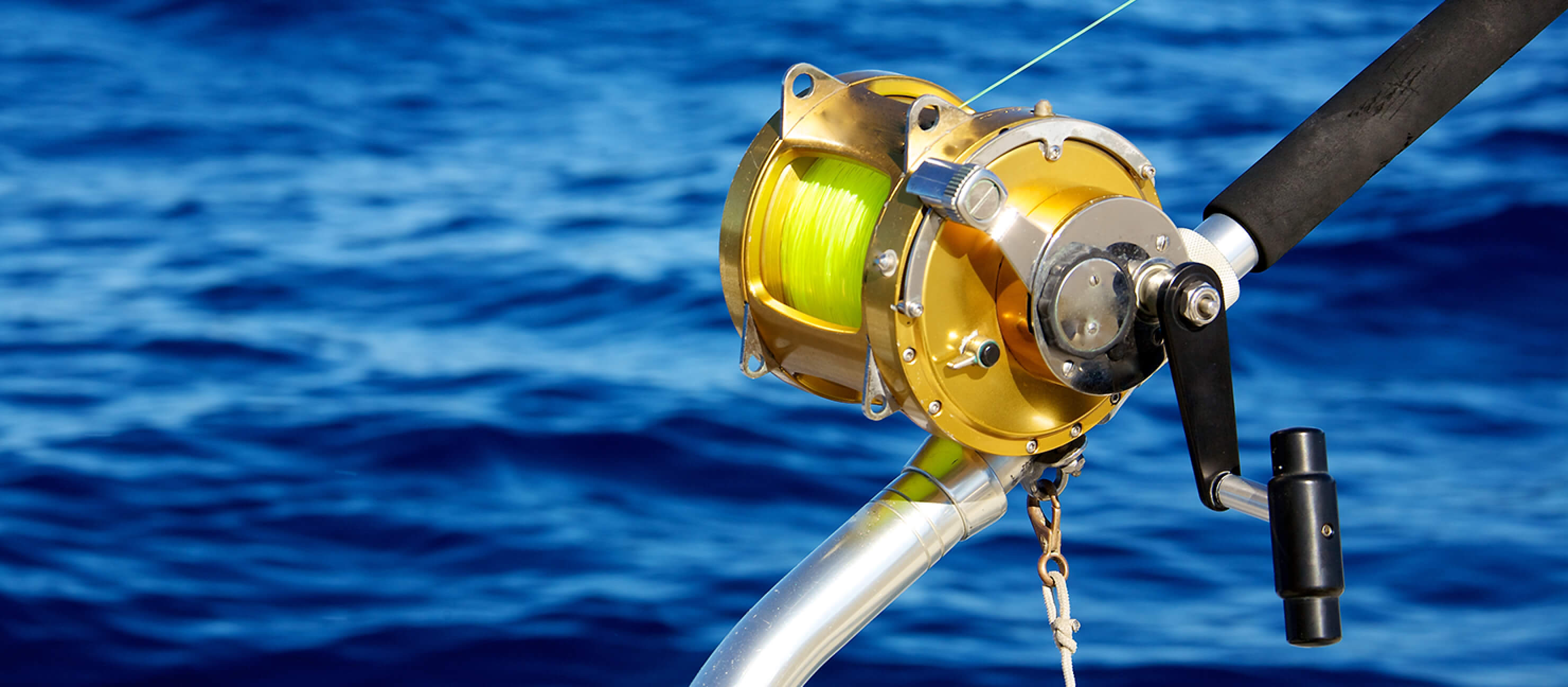
You’ll have better success on the water by understanding the differences between the five main fishing reel types. In this guide, we break it all down for you and offer a few selections from our experts to get you started.
Understanding the Different Types of Fishing Reels
Two essential ways to determine which reel you should use include: knowing what fish you want to catch and where you’ll catch them. Always consider your level of experience. Some reel types pose more challenges to operate than others.
| Fishing Reel Types Chart | ||||
|---|---|---|---|---|
| Reel Type | Benefits | Considerations | Ideal Locations | Best For |
| Spincast | Affordable, easy to use | Limited accuracy and range | Lakes or ponds | All fishers (including children) |
| Baitcast | Good distance, Better accuracy, Customizable | Challenging for beginners, Can easily tangle | Inshore or offshore | Experienced fishers |
| Spinning | Better control, Huge versatility, Improved power | Not suitable for heavy lines, Can easily tangle | Lakes, ponds, & inshore saltwater | All fishers |
| Fly Fishing | Durable, Relatively easy to cast with line | Not suitable for other fishing types, Relatively more expensive | Ponds or rivers | Experienced fishers |
| Saltwater Conventional | Good for various fishing techniques, Made for catching larger species | Heavier when transporting, Not suitable for beginners | Saltwater or surf | Experienced fishers |
Spincast Reels
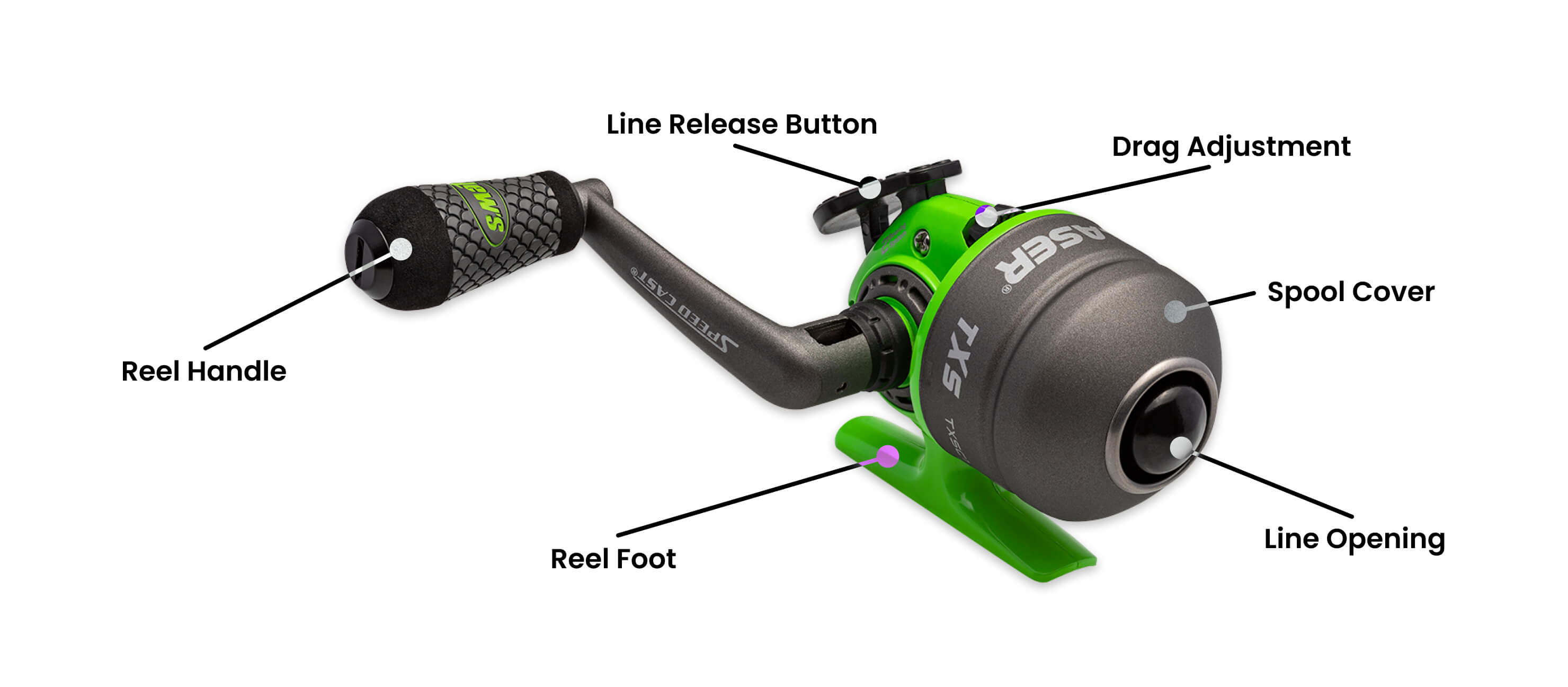
Spincast reels are ideal for effortless — even one-handed — casting by young and beginner anglers. If you’re after smaller fish (like crappie, trout, and perch), this reel is perfect! The spincast reel releases the line with a button. When you throw, your cast propels by the weight of your bait or lure. A tangle-resistant closed-cone design covers this spool.
This reel won’t give you the best casting distance compared to the others. However, its value, reliability, and simple design make it a perfect fit for less experienced fishers.
Pros
Very affordable
Easy to use + maintain
Good for beginners and youth
Difficult to tangle
Can be used with one hand
Cons
Limited accuracy
Limited range/line capacity
Lacks durability (often made with plastic)
Weak drag system
Difficult to repair
Expert Pick:
The Lew's Laser TXS Spincast Reel comes pre-spooled with a premium monofilament line to help you dominate the open water! Its lightweight graphite handle has a Combat Grip® thumb button for controlled handling. The dial drag system also provides smooth performance in all conditions — making it a great option for beginners.
Baitcast Reels
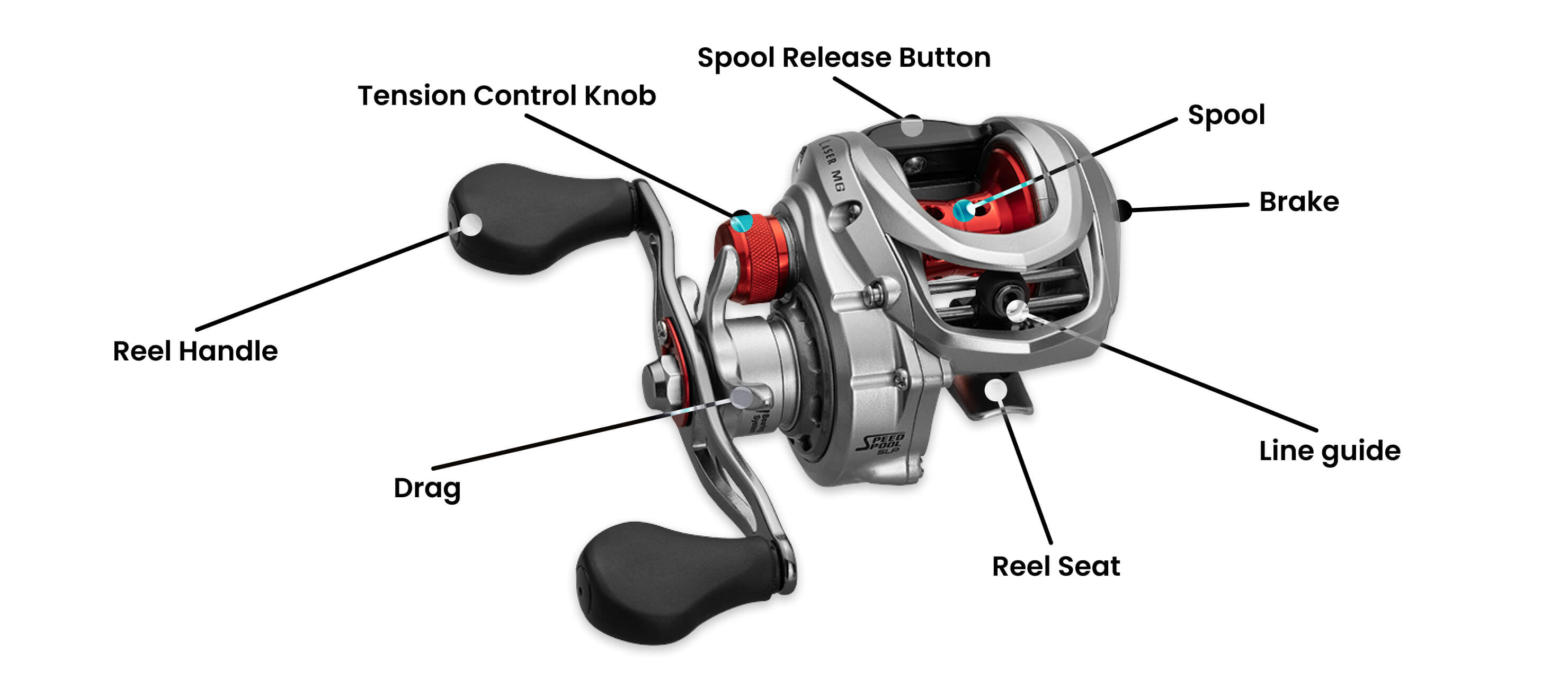
Experienced anglers prefer baitcast reels. They’re also a great option for heavier lures and lines and catching larger, stronger game fish (like largemouth bass). They work with the weight of your bait or lure as it pulls on the line.
Baitcast reels sit on top of your rod. The spool rotates as the line releases. This type of reel usually has a drag system that adjusts to the correct level of resistance needed. Your thumb should apply pressure to keep it from unspooling.
While baitcast reels are available in a variety of sizes, many less experienced anglers still find this reel type challenging to master. However, you’ll ultimately achieve the following with this reel type:
- Get greater casting distance
- Have better accuracy than other types of reels
- See a lessening line twisting and tangling compared to a spinning reel
Expert Tip:
Some baitcast reels are made as one piece. This helps to fight corrosion when saltwater fishing.
Pros
Good distance
Better accuracy + customizable (preferred reel-type of professionals)
Excellent drag system
Works with all fishing line types
Good control system and balance
Cons
Steep learning curve for beginners
Requires greater dexterity/switching hands
Can easily tangle when casting
More parts/more complex construction
Must change braking system and spool settings when you switch lure types
Expert Pick:
Easily reel in a big catch with the smoothness of the Lew's Laser MG Speed Spool SLP 100 Baitcast Reel. Suitable for freshwater, this right-handed baitcast reel features a lightweight graphic construction for optimal performance.
Spinning Reels

Spinning reels mount to the underside of a fishing rod. They’re easier to handle than baitcast reels — but with similar benefits. Anglers of all skill levels enjoy their special anti-reverse mechanism. This feature prevents your line from unraveling when you get a bite.
These reels may lack the precision other types have, but they offer fishers reliability, durability, and versatility. Ideal for beginners, they:
- Have a smaller learning curve
- Offer lots of control
- Are less prone to tangling than other types of reels
Expert Tip:
Beginners should look for models that come pre-spooled. Properly spooling your own line takes some time to learn.
Pros
Better control
Huge versatility
Improved power
Used by all skill levels
Good value + very durable
Cons
Not suitable for heavy lines or lures
Can easily tangle
Small learning curve
Requires maintenance
Less casting distance and accuracy/p>
Expert Pick:
The Shimano Sedona FI Spinning Reel delivers performance and durability in a lightweight design to help minimize hand fatigue. This spinning reel has an innovative spool lip design to improve casting distances with minimal backlashes and wind knots. The Varispeed technology ensures constant spool speed, even line lay, and excellent control.
Fly Fishing Reels
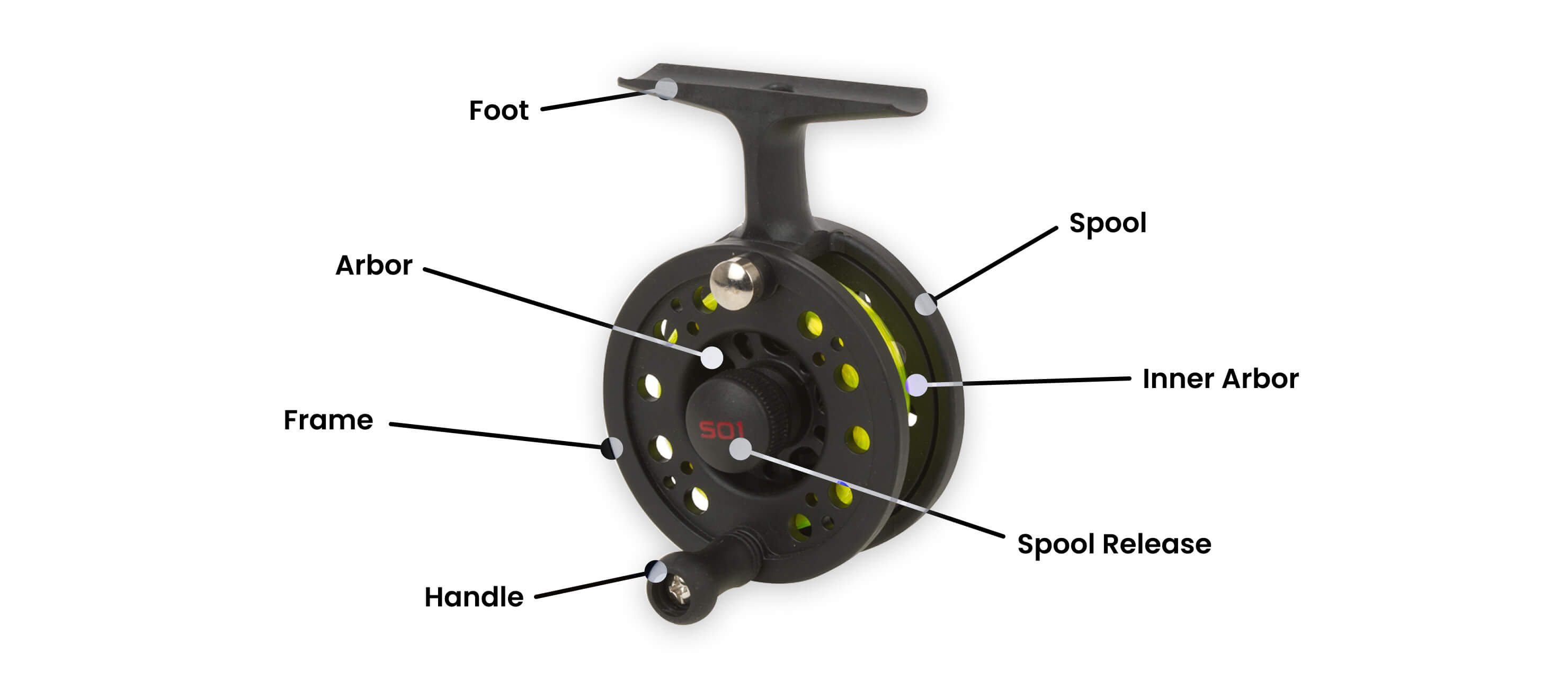
In fly fishing, you want the flies to imitate the natural behaviors and movements of what the fish eat. Fly fishing reels cast with the weight of the line (rather than the lure). You’ll be able to cast even the lightest of flies longer distances and have them land delicately on the water.
They offer two different drag systems (spring-and-pawl or disc drag) and three different retrieval systems (single action, multiplying, and automatic). Compared to other dynamic types, fly reels have a very specific use and a limited rod pairing.
Expert Tip:
When buying a fly reel, match the line weight to your rod. That’s based on the type of fish you’re after and your fishing style, so that the reel becomes part of a well-balanced system.
Pros
Relatively easy handling and casting
High rate of retrieval
Can be used in fresh- and saltwater
Less harm when you catch + release
Cons
Not suitable for other fishing types
Relatively more expensive
Takes time to perfect technique
Requires more patience
Expert Pick:
The pre-spooled Mr. Crappie® Solo Jiggin' Reel Right-handed features a dual ball-bearing drive system with a 1:01 gear ratio to provide steady retrieves. The graphite frame offers a lightweight strength. The spool helps reduce line twisting, increases line recovery, and limits wobbling during rotation.
Saltwater Conventional Reels
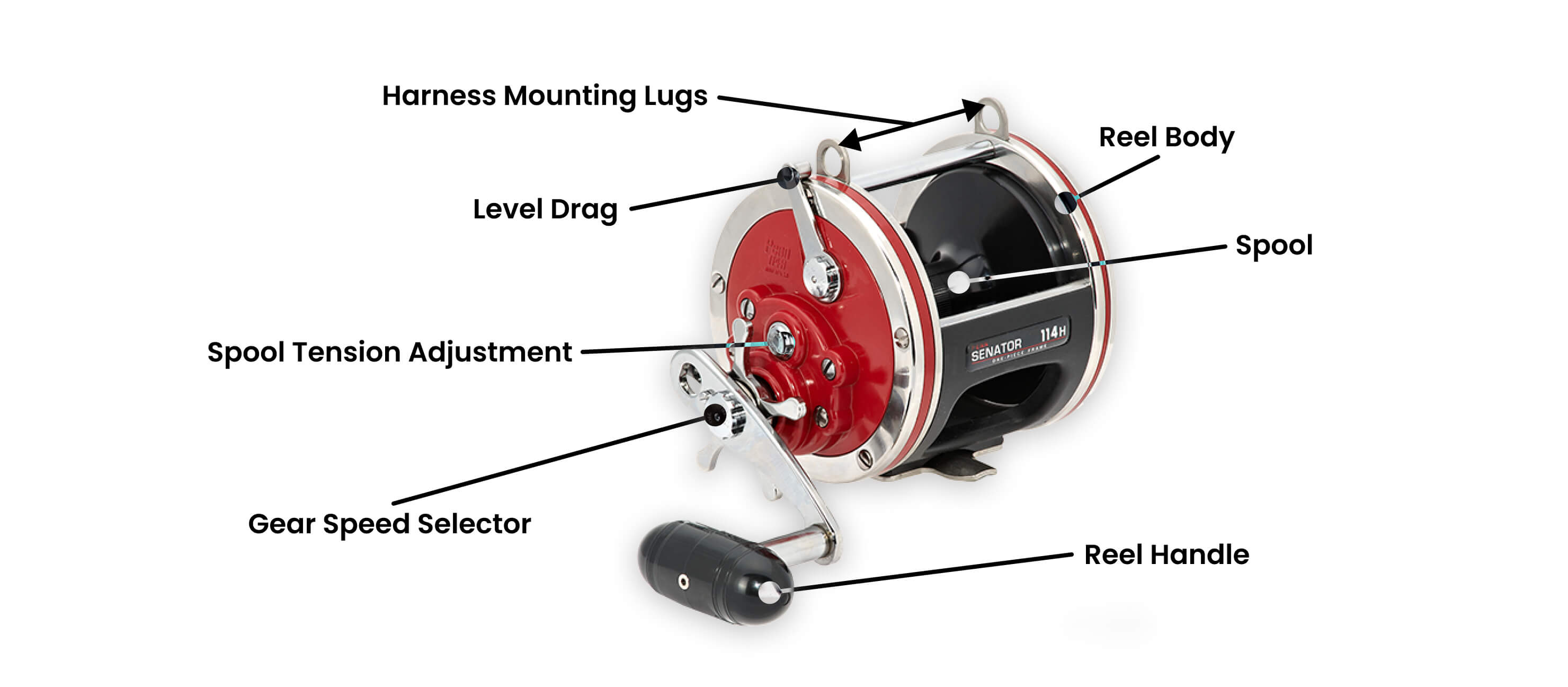
Saltwater conventional reels (also called overhead reels) are a specialty used for big game and offshore fishing. These versatile reels come in a variety of styles, options, and break types. Most are made of aluminum and have either a lever- or star drag system. The different styles of overhead reels include the following:
- Round conventional reels are best for casting
- Low-profile reels are ideal for manipulating lures
- Level-wind reels ensure your line is evenly distributed during winding
- Open frame reels are helpful for easier, longer casts
- Two-speed reels are most versatile
- Single-speed reels are for lines below 40-pound-test
Expert Tip:
Saltwater conventional reels mount perpendicular to the rod (rather than parallel like a spinning reel). This gives you a better ability to ‘feel’ what’s happening on the line.
Pros
Good for various fishing techniques
Made for catching larger species
Cons
Heavier when transporting
Not suitable for beginners
Expert Pick:
We love the PENN Senator 114H2 Conventional Reel Convertible for its rigid frame and smooth operation. Made of lightweight graphite, our pick features two stainless steel frame rings and ball bearings. The power handle is convertible from right- to left-handed operation.
Saltwater vs Freshwater Reels
- Freshwater reels: Freshwater reels are used for fishing inland on lakes, rivers, and streams. They’re often made of less robust materials. While they aren’t as strong, they’re not as costly. Reels made for freshwater are usually smaller (meaning they have shorter line capacity).
- Saltwater reels: You use saltwater reels on large bodies of saltwater like coastal oceans, deepsea trolling, and bays. They’re typically made of fewer parts and are bigger than freshwater reels
Expert Tip:
Not all saltwater fishing is done in the deep seas. If you’re planning on fishing inshore, your reel will look very similar to the freshwater variety.
Choosing The Best Type of Reel for Your Rod
- Where do you plan to fish? Think about where and in what conditions you’ll fish most. The standard reel foot is rectangularly shaped to fit most rods. But there is some variation with how close the fit is so be mindful of this while making your selections.
- What species do you hope to catch? If you’re after Mahi Mahi out on the open water you will need a different rod and reel set than you would if you trolled for crappie from your kayak.
- What is your preferred fishing technique? You should always consider a reel that matches the line size you use most often. Remember, the lighter the line, the smaller the reel.
- What is your fishing skill level? You can never go wrong with choosing a spinning reel or even a spincasting reel if you’re brand new to fishing or buying for your child. They’re versatile and easier to get started with.
- What is your budget? If you’re just starting out, you may want to start with a lower-cost reel and rod. This allows you to get used to your gear before you invest a lot of money. We recommend shopping for your rod and reel as a combo like these cost-effective options.
Have Fun Out There!
So now that you know a little bit more about the different types of fishing reels, what are you waiting for? Get out there and start reeling in those fish! Before you head out on your big fishing trip, be sure to catch our guide for the best types of rods!


